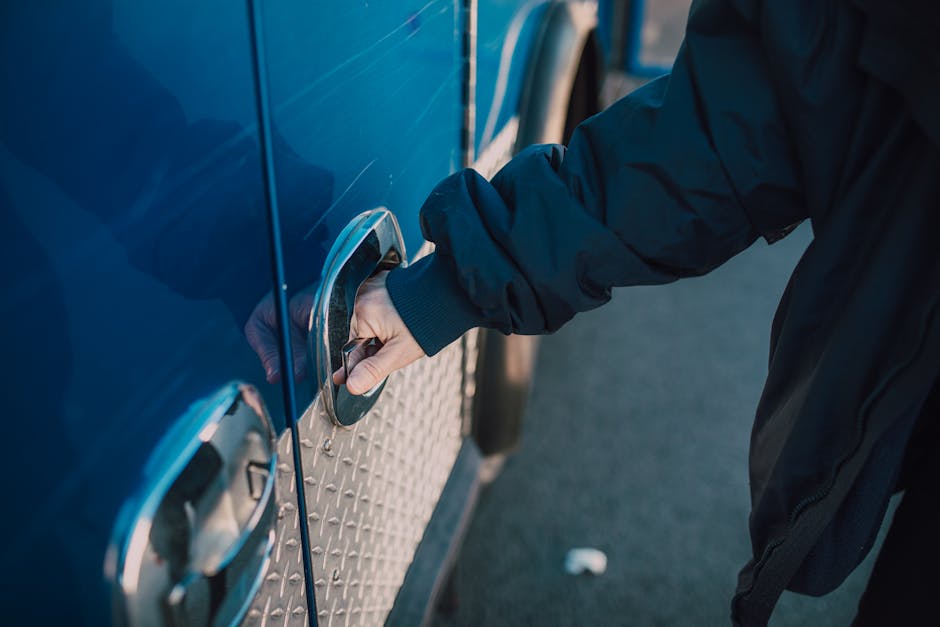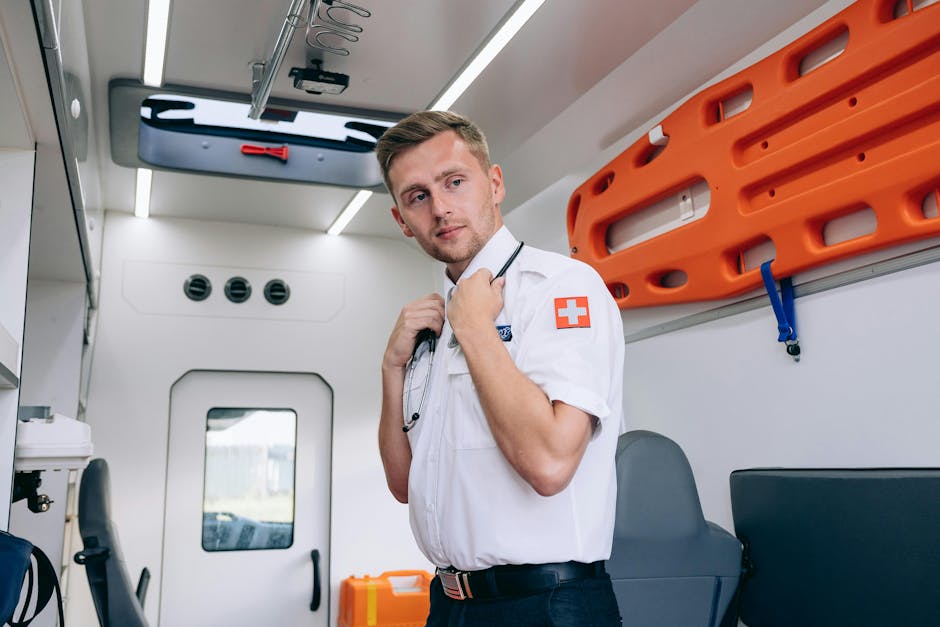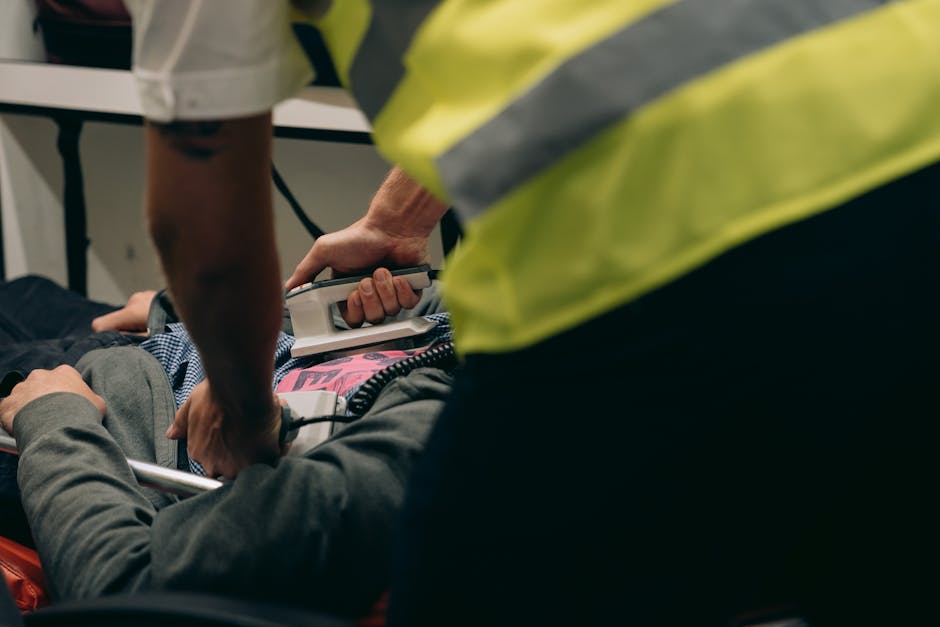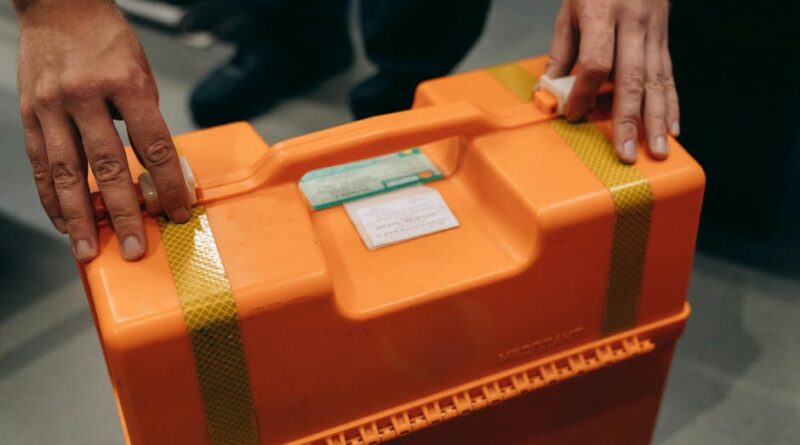How to Handle Medical Emergencies: A Comprehensive Guide
Medical emergencies can happen at any time, to anyone, and knowing how to respond quickly and effectively can make all the difference. Whether it’s a heart attack, stroke, severe injury, or any other life-threatening situation, being prepared and knowing the proper steps to take can potentially save a life. In this article, we will explore the essential strategies and techniques for handling medical emergencies, equipping you with the knowledge and confidence to act decisively when it matters most.
The Importance of Preparedness

Emergencies can strike without warning, and being prepared can mean the difference between life and death. One of the most critical aspects of handling a medical emergency is having a basic understanding of first aid techniques and knowing how to stay calm under pressure. In a crisis situation, every second counts, and having the right knowledge can help you provide immediate assistance until professional help arrives.
For example, knowing how to perform CPR (cardiopulmonary resuscitation) can be crucial in saving someone’s life during a cardiac arrest. In the time it takes for paramedics to arrive, performing CPR can help maintain blood flow to the vital organs and increase the chances of survival. Similarly, knowing how to control bleeding, manage choking incidents, and recognize the signs of a stroke can all play a significant role in the outcome of a medical emergency.
Recognizing Signs of a Medical Emergency

One of the first steps in handling a medical emergency is recognizing when one is taking place. Some of the most common signs of a medical emergency include:
- Chest pain or pressure
- Difficulty breathing or shortness of breath
- Sudden weakness or numbness in the face, arm, or leg
- Severe abdominal pain
- Changes in mental status, such as confusion or disorientation
- Severe headache or dizziness
If you or someone else is experiencing any of these symptoms, it’s crucial to seek immediate medical attention. Calling 911 or your local emergency number is the first step in getting the help you need. Be prepared to provide information about the situation, including the location, the nature of the emergency, and any pertinent details about the individual’s condition.
Creating an Emergency Action Plan

Having an emergency action plan in place can help streamline your response to a medical emergency and ensure that everyone knows their role and responsibilities. When creating an emergency action plan, consider the following key components:
Designating a Leader
Identify a designated leader who will take charge in the event of a medical emergency. This person will be responsible for coordinating the response, delegating tasks, and communicating with emergency services.
Training and Education
Ensure that all individuals involved in the emergency action plan receive proper training and education on basic first aid techniques, CPR, and how to use an AED (automated external defibrillator) if available.
Emergency Contact Information
Compile a list of emergency contact information for all participants in the action plan, as well as important phone numbers for local emergency services, hospitals, and poison control centers.
Practice Drills
Regularly conduct practice drills to ensure that everyone is familiar with their roles and responsibilities in a medical emergency. Practice scenarios such as responding to a heart attack, stroke, or severe injury to test the effectiveness of your plan.
Basic First Aid Techniques

Having a basic knowledge of first aid techniques can be invaluable in a medical emergency. Here are some essential first aid skills that everyone should know:
CPR (Cardiopulmonary Resuscitation)
CPR is a life-saving technique used to maintain blood circulation and oxygenation in a person who is in cardiac arrest. By performing chest compressions and rescue breaths, you can help keep the person alive until professional help arrives.
Controlling Bleeding
In cases of severe bleeding, it’s essential to apply direct pressure to the wound using a clean cloth or bandage. Elevate the injured limb above the heart to help reduce blood flow and seek medical attention as soon as possible.
Choking Response
If someone is choking and unable to breathe, perform the Heimlich maneuver by delivering abdominal thrusts to dislodge the obstruction. Encourage the person to cough forcefully and seek medical help if the choking persists.
Managing Burns
In the event of a burn, rinse the affected area with cool water for at least 10 minutes to help reduce pain and prevent further damage. Cover the burn with a sterile gauze bandage and seek medical attention if necessary.
Recognizing Signs of Stroke
When it comes to stroke, recognizing the signs and acting quickly is crucial. Remember the acronym FAST: Face drooping, Arm weakness, Speech difficulties, Time to call 911. If you suspect someone is having a stroke, seek medical attention immediately.
Advanced First Aid Techniques
In addition to basic first aid skills, there are advanced techniques that can be useful in specific emergency situations. These techniques may require more training and practice but can significantly impact the outcome of a medical emergency:
Using an AED
An AED (automated external defibrillator) is a portable device that can deliver an electric shock to the heart to restore its normal rhythm in cases of cardiac arrest. AEDs are designed to be user-friendly and can be used by anyone with minimal training.
Administering Epinephrine
Epinephrine, also known as adrenaline, is a medication used to treat severe allergic reactions such as anaphylaxis. Administering epinephrine through an auto-injector can help reverse the symptoms of an allergic reaction and buy time until emergency medical services arrive.
Applying Tourniquets
In cases of severe bleeding from a limb, applying a tourniquet can help stop the flow of blood and prevent further loss. Proper technique is essential when using a tourniquet to avoid causing additional harm to the injured limb.
Assisting with Medications
In some cases, assisting a person with taking their prescribed medications can be crucial in managing a medical emergency. Understanding the proper dosages, administration routes, and potential side effects of medications can help prevent adverse reactions.
Common Misconceptions about Medical Emergencies
Despite the importance of being prepared for medical emergencies, there are several common misconceptions that can hinder a person’s ability to respond effectively. Some of these misconceptions include:
Waiting for Symptoms to Improve
Many people believe that waiting for symptoms to improve on their own is the best course of action. However, in a medical emergency, delaying treatment can have serious consequences. It’s essential to seek immediate medical attention if you suspect a medical emergency.
Assuming Someone Else Will Take Charge
In a crisis situation, it’s common for individuals to assume that someone else will take charge and provide assistance. However, being proactive and taking the lead can make a significant difference in the outcome of a medical emergency. Don’t hesitate to step up and offer help if needed.
Not Calling 911 Early Enough
Some people wait too long to call 911 or their local emergency number, thinking that the situation will resolve itself. It’s crucial to call for help as soon as you suspect a medical emergency, as early intervention can save lives.
FAQs about Handling Medical Emergencies
Q: What should I do if I am in a medical emergency situation but don’t have any formal training in first aid?
A: If you find yourself in a medical emergency without any formal training, remember to stay calm, call 911 or your local emergency number, and follow the dispatcher’s instructions. Even basic interventions like calling for help and providing reassurance can make a difference.
Q: How can I best prepare for a medical emergency in my home or workplace?
A: To prepare for a medical emergency, consider taking a first aid and CPR course, creating an emergency action plan, and familiarizing yourself with the location of AEDs and other emergency equipment. Practice drills with your family or colleagues to ensure everyone knows what to do in an emergency.
Q: What are the most important items to include in a first aid kit?
A: A well-stocked first aid kit should include items such as bandages, gauze pads, adhesive tape, antiseptic wipes, disposable gloves, scissors, tweezers, a thermometer, and pain relievers. Customize your first aid kit to meet your specific needs and the needs of your family or workplace.
Conclusion
To wrap things up, handling medical emergencies requires a combination of knowledge, preparation, and quick thinking. By familiarizing yourself with basic first aid techniques, recognizing the signs of a medical emergency, and creating an emergency action plan, you can be better equipped to respond effectively in a crisis. Remember, every second counts in a medical emergency, and your actions can make a life-saving difference. Stay informed, stay prepared, and be ready to act when it matters most.
Whether you’re at home, at work, or in a public setting, having the skills and confidence to handle medical emergencies can empower you to take control of a critical situation. By staying informed and prepared, you can make a positive impact on the outcome of a medical emergency and potentially save lives in the process. Remember, it’s better to be over-prepared than under-prepared when it comes to handling medical emergencies. Stay safe, stay informed, and be ready to respond when the unexpected occurs.




